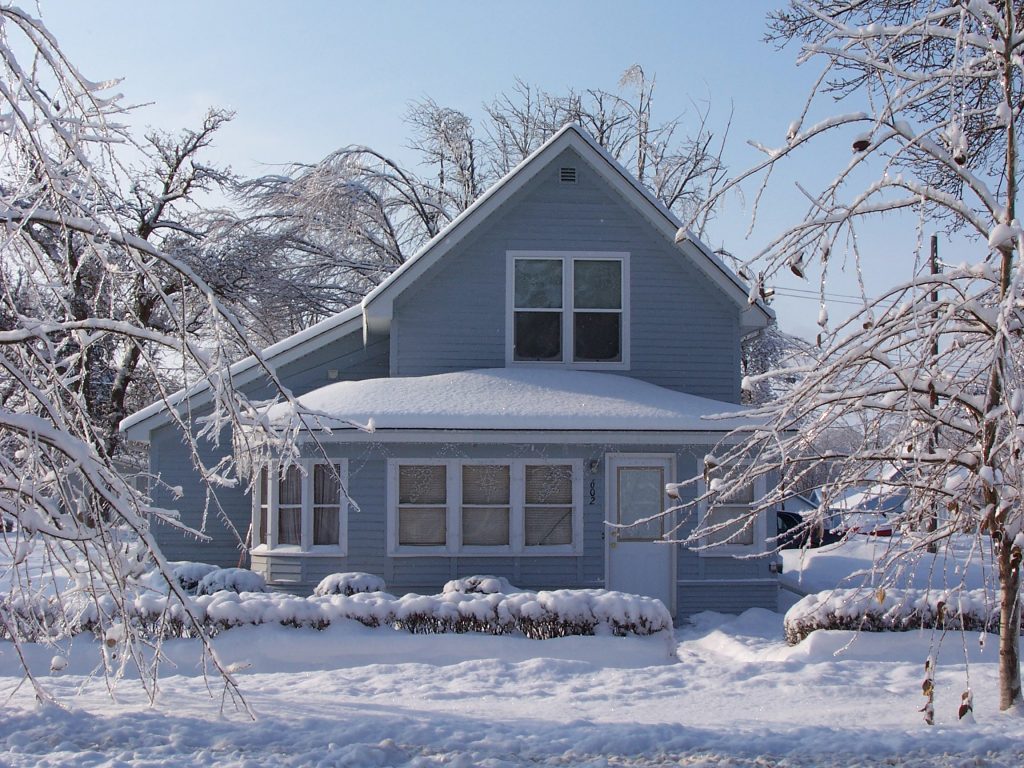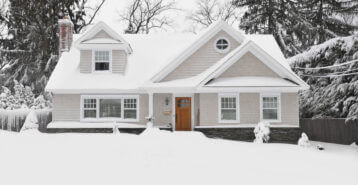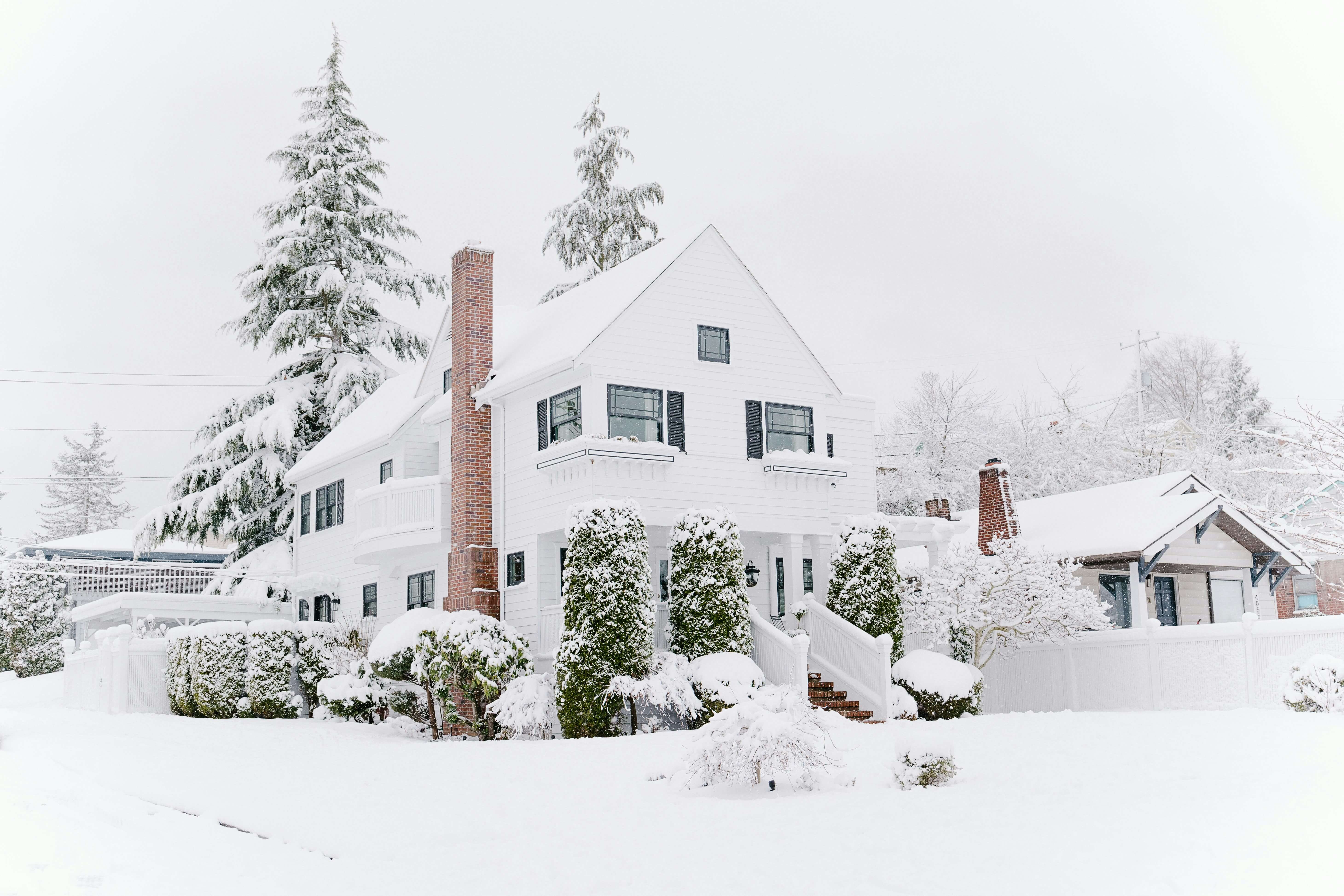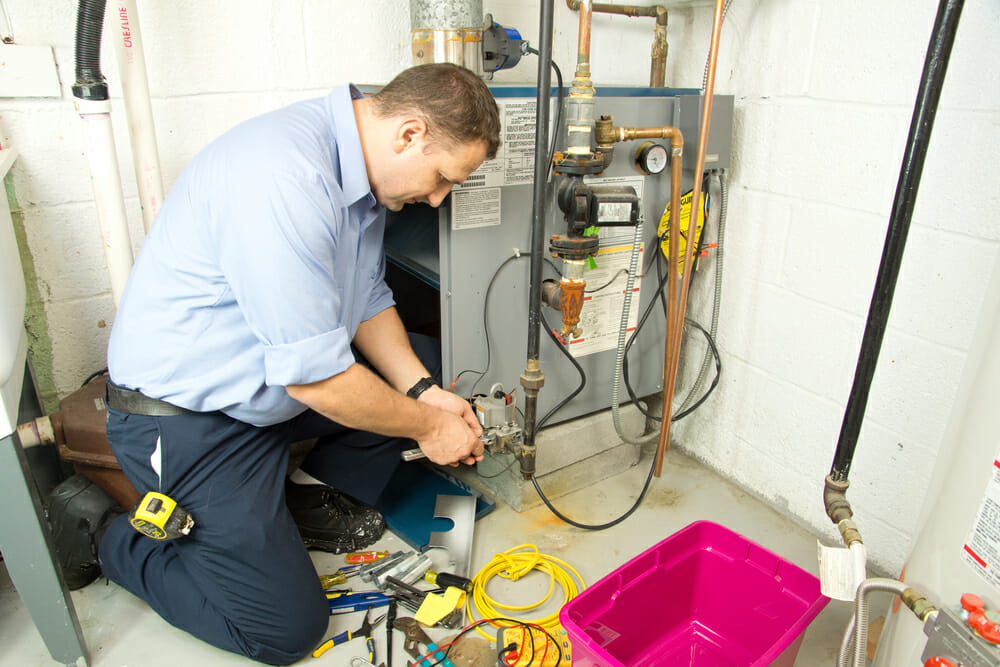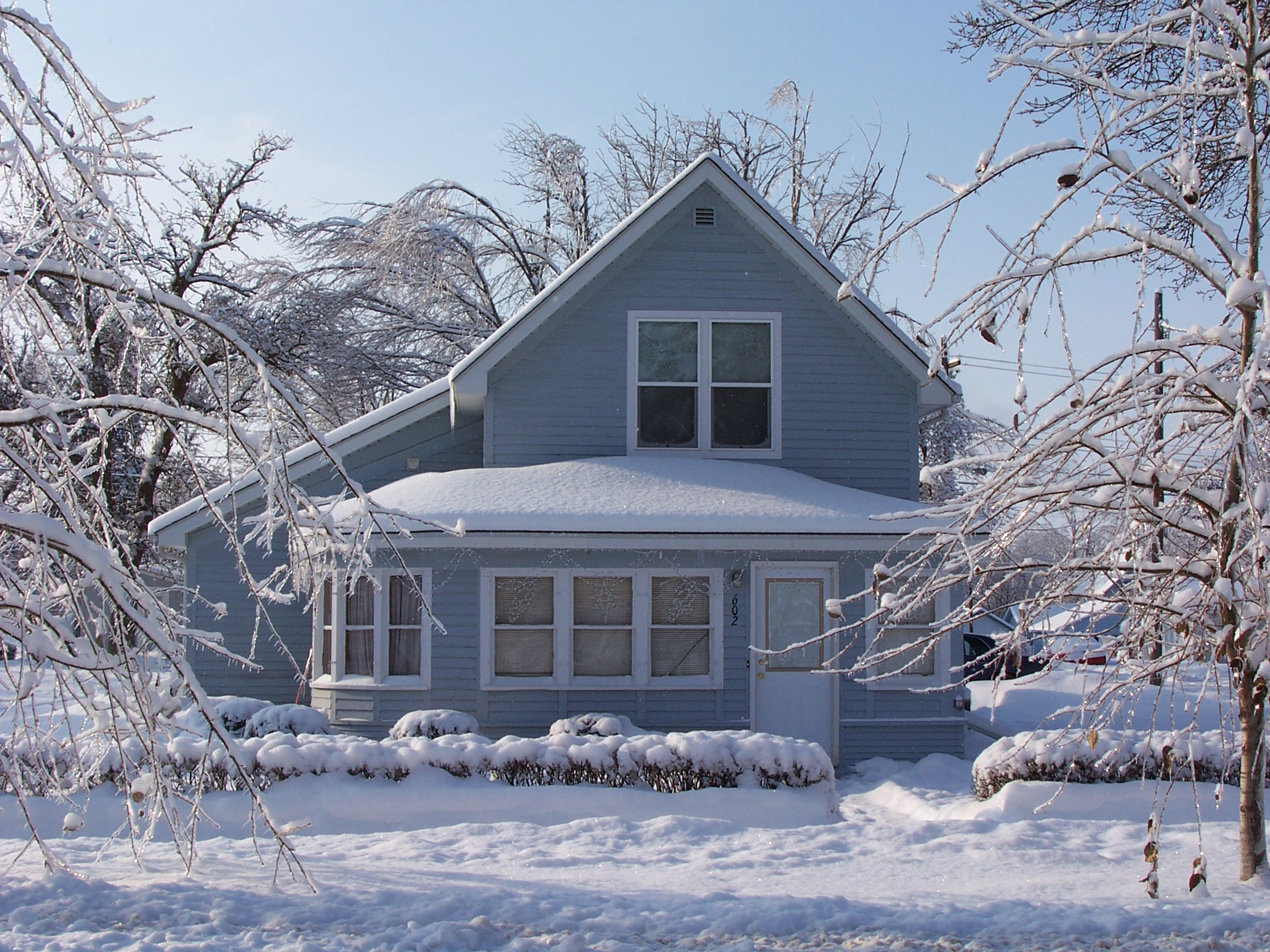What Size Furnace Do I Need in Illinois?
For a typical Illinois single‑family home (about 1,200–2,600 sq. ft.), you will usually need a furnace size in the ~45,000–90,000 BTU/hour (output) range. That often translates to 60,000–100,000 BTU input furnaces when you account for efficiency. Actual needs vary depending on where in the state you live and how your house is built.
Let’s dive into the details so you can find your own estimated furnace size. If you’d like, you can also use Modernize’s furnace size calculator. Be aware that roughly 76% of Illinois homes use a forced-air furnace, so we’ve tailored our guidance below to that furnace type.
What Can Move You Above or Below the Average Range?
- Colder counties vs. milder counties. Northern and lakeshore counties (e.g., Cook, Lake, McHenry) have lower temps than far‑southern counties (e.g., Massac, Pope), so they need more BTUs per square foot.
- House age + envelope. Pre‑1990 homes (original windows, limited insulation, air leaks) can require 15–35% more heat than a well‑sealed, code‑built home of the same size. Illinois adopted the 2021 Illinois Energy Conservation Code in 2024, which tightened insulation/air‑sealing baselines for new builds and major retrofits. Newer homes often need fewer BTUs per square foot.
- Ducts + layout. Leaky or uninsulated ducts in unconditioned basements/attics, lots of exterior corners, or tall ceilings can increase how much capacity your furnace needs.
- Setpoint & usage. Warmer indoor setpoints, frequent door openings, and higher ventilation needs also increase requirements.
What Info Do I Need to Calculate Furnace Size for Illinois?
To get a solid ballpark estimate for your own home, you’ll need the following:
- Your heated square footage. For most homeowners, this just means the square footage of your home. However, if there are specific rooms/areas of your home that you are not heating, you will want to subtract that from your total square footage.
- Your county. Furnace size calculations use something called the “99% design temperature.” This term essentially means “what is the average coldest day in your county?” So you will, of course, need to know which county you live in to find this number. We discuss design temperature in more detail below!
- House upgrades. For the purposes of furnace size, you will want to consider the age of your windows and doors, the quality of your insulation, and how well-sealed your house is generally against the outdoors.
- Duct condition. A surprising amount of heated and cooled air is lost through gaps or leaks in your airducts. You may want to have a professional test how leaky your ducts are before you get a new furnace. Fixing leaky ducts tends to be relatively straightforward and inexpensive, and it can result in you needing a smaller (and less expensive) furnace.
- Preferred indoor setpoint. If you like to keep your home warmer, you’ll be using your furnace more, and so you may want to size up a bit.
What Is Design Temperature?
Your heating design temperature is the outdoor temperature that your area is at or above 99% of the winter hours. It’s the steady “cold‑day” target Manual J uses—not last year’s extreme low. Illinois design temps span from ‑4°F in the northwest to +15°F in the far south.
Use this ENERGY STAR Design Temperature guide to find yours. Navigate first to Illinois and then check the “Heating” column.
What Is AFUE?
AFUE stands for Annual Fuel Utilization Efficiency. It is a percentage that represents how much of the fuel your furnace uses is actually converted into heat that goes into your home. The higher the percentage, the more efficient your furnace is. We have a blog post all about understanding AFUE furnace ratings if you want to learn more.
AFUE For Illinois
In Illinois, ENERGY STAR recommends an AFUE of 95% or higher. This isn’t a mandatory number, but following this guidance will lead to long-term savings. A less efficient furnace (say, one with an 80% AFUE) will be cheaper up front, but you will wind up paying more each month in utilities since it will be consuming a more significant amount of fuel that never actually becomes heat for your home.
Note: The U.S. DOE has finalized a 95% AFUE minimum for new non‑weatherized gas furnaces starting December 18, 2028, which is just another reason to plan on high‑efficiency equipment.
What Is Manual J?
Manual J is the residential load calculation method that determines how many BTUs your home actually needs at your 99% design temperature. It looks at floor‑by‑floor areas, wall/attic R‑values, window U‑factors and shading, air leakage, ventilation, duct location/losses, and your indoor setpoint. The output is a heating load (BTU/h) used to select equipment. The guide below gives you a ballpark using Illinois‑specific design temperature bands, but the final selection should be verified with a Manual J.
How We Ballpark Manual J For Illinois
We map counties into temperature bands and use these rule‑of‑thumb ranges for modern/average homes. Find your design temperature using the ENERGYSTAR guide we lined above, then align it to one of the options below. We divvied these up into approximate location within Illinois for your ease, but you should use the design temp as the ultimate categorization.
- Coldest / Northern IL (≤ ‑3°F): ~30–40 BTU/ft²
- Average / Central IL (‑2 to +2°F): ~25–35 BTU/ft²
- Milder / Southern IL (≥ +6°F): ~20–30 BTU/ft²
Find Your Furnace Size
Step 1 — Heating Load (Output BTU/h)
Furnace output is the actual amount of energy/capacity your home will need.
Heating load = Home square feet × BTU per square foot (from your band above)
Step 2 — Furnace Input BTU/h
Furnace input is the number that is shown on many furnaces brands and models, so this will be the number you look for on the sticker.
Furnace input = Heating load / AFUE
Example
Output: 2,000 sq. ft. * 25–35 BTU/ft² = 50–70k BTU/h.
Input: With a 95% AFUE furnace, input ≈ 53–74k BTU/h.
Illinois Furnace Size: Reference Table
This quick reference table shows common home sizes & Illinois design‑temp bands. The BTU/h shown is the needed output.
| Heated Sq. Ft. | Northern IL (≤ ‑3°F) | Central IL (‑2 to +2°F) | Southern IL (≥ +6°F) |
|---|---|---|---|
| 1,000 | 30,000–40,000 BTU/h | 25,000–35,000 BTU/h | 20,000–30,000 BTU/h |
| 1,400 | 42,000–56,000 BTU/h | 35,000–49,000 BTU/h | 28,000–42,000 BTU/h |
| 1,800 | 54,000–72,000 BTU/h | 45,000–63,000 BTU/h | 36,000–54,000 BTU/h |
| 2,200 | 66,000–88,000 BTU/h | 55,000–77,000 BTU/h | 44,000–66,000 BTU/h |
| 2,600 | 78,000–104,000 BTU/h | 65,000–91,000 BTU/h | 52,000–78,000 BTU/h |
| 3,000 | 90,000–120,000 BTU/h | 75,000–105,000 BTU/h | 60,000–90,000 BTU/h |
Older or Drafty Home?
If your house was built pre‑1990 with original windows/limited air‑sealing, multiply the output by ~1.15 – 1.35. If your ducts run through unconditioned spaces like attics and basements (and aren’t sealed/insulated), add another 10% to the load.
Conversely, high‑performance upgrades (deep air‑sealing, new windows, extra insulation) can reduce the BTU/ft² factor by ~10–20%.
Why More Capacity Does Not Always Mean More Efficiency
Oversized furnaces short‑cycle, which leads to:
- Uneven comfort & noise. Your rooms will heat fast near the thermostat but leave rooms further away cool. That’s because the blower ramps up hard and shuts off quickly.
- Higher bills & wear. Frequent starts waste energy as well as stress the igniters and heat exchangers.
- Worse humidity control with AC. If you have a big blower paired with cooling, it can remove less moisture in summer.
Recommended Furnace Types for Illinois
- 95–97% AFUE, two‑stage, variable‑speed condensing gas furnace
The “sweet spot” for budget, comfort, and code compliance in most of the state. Variable‑speed ECM blowers run longer at low speed for steadier temperatures and quieter operation. - 97–99% AFUE, modulating condensing gas furnace
Best comfort and widest output turndown (great for Chicago‑area shoulder seasons and larger two‑story homes). Expect premium cost but excellent efficiency and quiet. - Dual‑fuel (heat pump + gas furnace)
A cold‑climate heat pump handles most hours efficiently; the furnace takes over for deep cold snaps. This is popular in ComEd territory thanks to utility incentives for heat pumps. You still keep a gas backup for the coldest days, meaning you’ll be comfortable year-round.
Best Furnace Brands for Illinois
These are strong fits for Illinois climates and widely supported by Midwest distributors and service networks:
Bryant
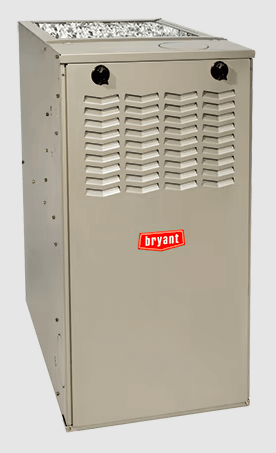
Modernize’s Bryant furnace review rated this brand four out of five stars for their fair pricing, dependability, and line of energy-efficient models. This brand would be an excellent fit for cold Illinois winters!
- Recommended model: Evolution 987M (modulating, variable‑speed; up to 98.3% AFUE). Excellent turndown for steady heat, robust controls, and good humidity management when paired with matching AC/HP.
American Standard
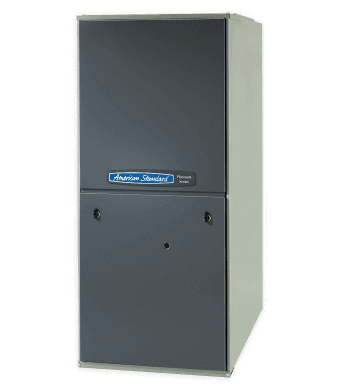
Another excellent choice that also earned four out of five stars in Modernize’s review is American Standard furnaces. Their furnaces have an exceptional lifespan and are known for being especially quiet. They also offer furnaces with advanced staging so you can find the ideal balance of comfortable temperatures and efficiency.
- Recommended model: Platinum 95 (fully modulating; ~97% AFUE). Known for quiet operation and stable temperature control with AccuLink® communicating capability.
York
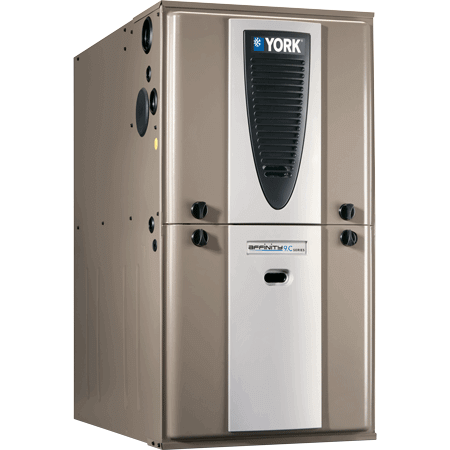
In Modernize’s review of York furnaces, we discuss how reliable they are as well as their overall affordability compared to other top brands. However, while these furnaces work very well for the coldest of climates, they are best suited to smaller homes.
- Recommended model: Affinity YP9C (98% AFUE, modulating, variable‑speed ECM). Deep modulation and solid Midwest dealer coverage. This model pairs well in dual‑fuel setups.
Prefer another brand? Check out Modernize’s list of best furnace brands or visit our review hub to check out other heating system reviews.
How Much Does a New Furnace Cost?
Installed costs vary with efficiency, staging (single/two‑stage/modulating), size, and installation complexity. The national average furnace cost ranges from $4,000 to $9,998. That price includes installation.
In the colder parts of Illinois, you can expect to need a more efficient furnace, which may be on the higher end of that range. However, a well-sealed home or a smaller home might be able to find options toward the middle of that price range.
Furnace Rebates in Illinois
At the time of this article’s publication, Modernize found the following rebates for gas furnaces:
- Nicor Gas rebates for furnaces
- Peoples Gas rebates for furnaces
- North Shore Gas rebates for furnaces, boilers, insulation, thermostats and more
- ComEd heat‑pump incentives for dual‑fuel conversions
Need Help Finding an HVAC Pro?
You can browse Modernize’s list of HVAC installers in Illinois to find reviews, discounts and promotions, and more. If you would rather have us do the hard work for you, click below and answer a few questions about your project, and we will match you with up to four HVAC pros in your area.
Compare top-rated HVAC pros in your area.
Read real homeowner reviews, explore qualifications, and view promotions. Modernize makes it easy to browse professionals and find one that will be perfect for your project.
